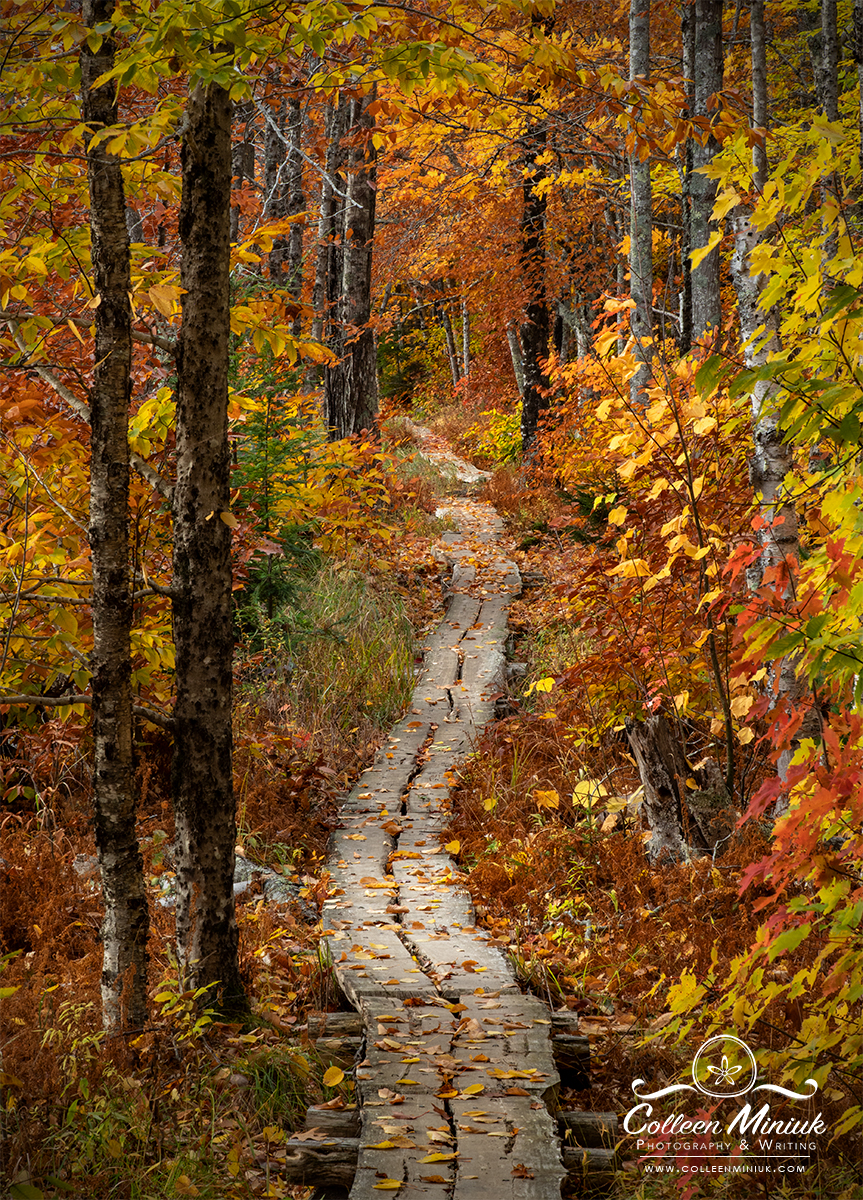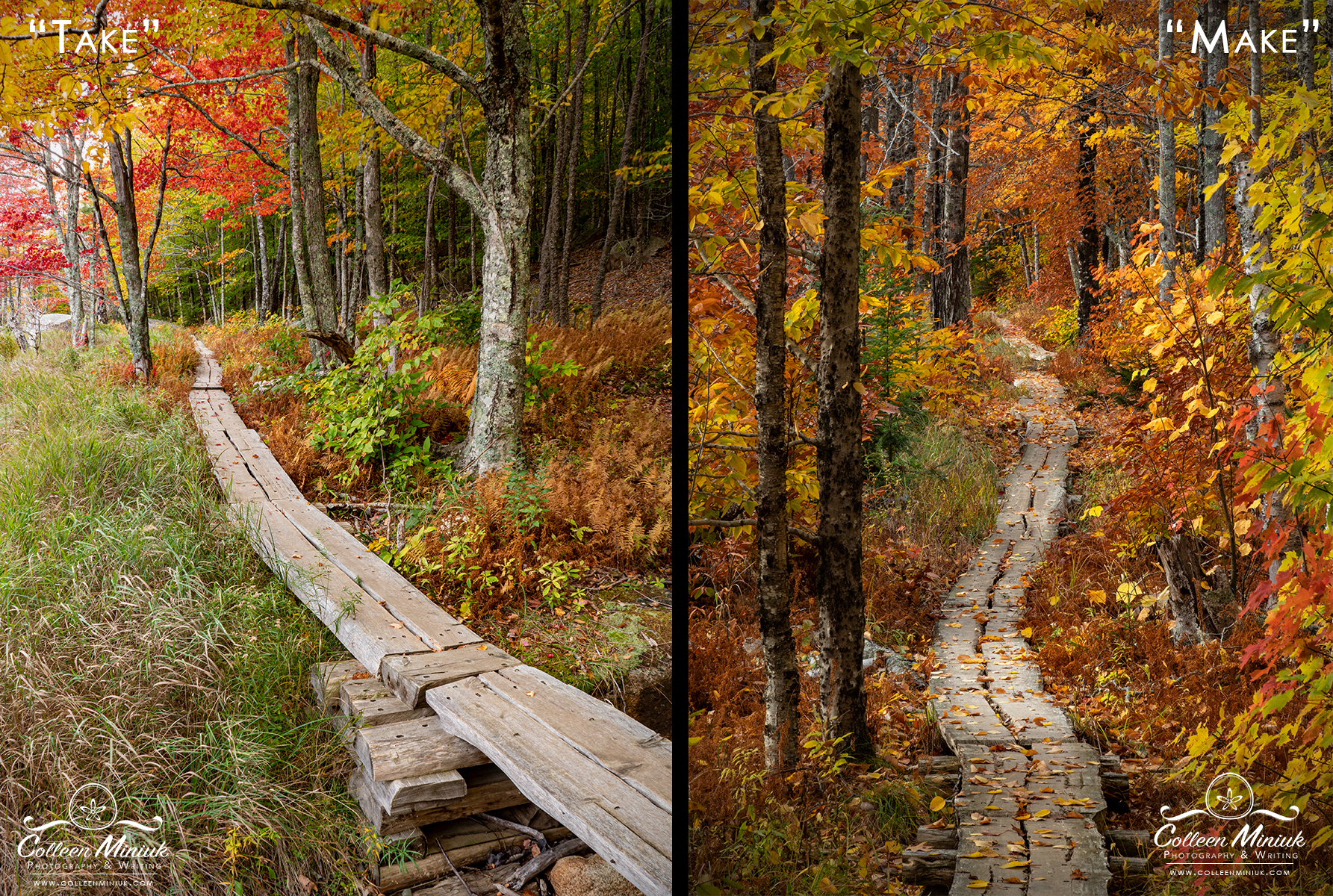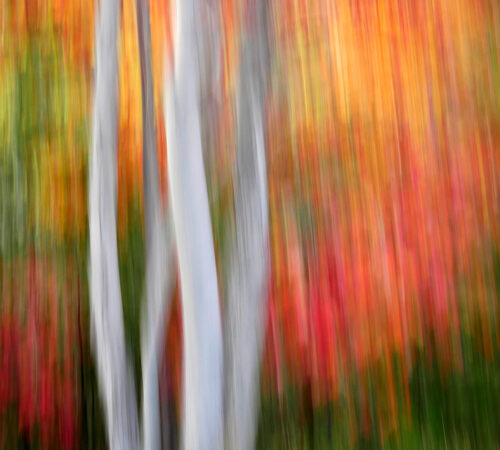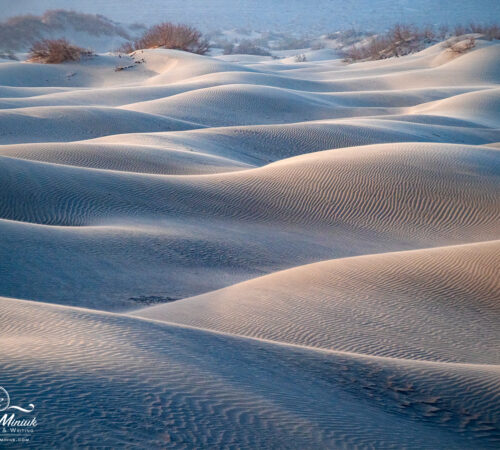Take vs. Create

Dear Bubbles:
Why do you create photos?
~Ramen
Dear Ramen:
I’ve offered insights into my motivations for why I photograph previously in an earlier Dear Bubbles column (“If No One Saw Your Photos”). Given your emphasis on the word “create,” though, I’m assuming you’re interested in the semantics behind why I refer to the process of photographing as “creating” (or similarly, “making”) photographs. I can do semantics! I love semantics!
One thing I quickly learned as a writer is that every word written on a page matters. Every term and collection of terms carry specific meaning to a reader. To ensure my intent aligns with my delivery, I’ll ask myself what I’m trying to say then match that up with definitions. For example, while tending to my memoir manuscript, I have spent hours debating the subtle connotational nuances between words like “dumb” and “stupid”. In that sense, I’m deliberately bringing my story to life in exactly the way I want, word for word, phrase by phrase, paragraph by paragraph, from an otherwise blank rectangular piece of paper.
(I chose “dumb” over “stupid” in my memoir manuscript because the heavy sound of it matched the sinking mood I was trying to create at the end of a chapter…)
This is not so different than how I create my photographs these days. I first have some form of experience in a landscape that evokes a meaningful response which triggers my intent, my message. Then I arrange the visual elements using visual language—light, layer, line, color, subject placement, visual weight, etc.— in a way that expresses that meaning in a photograph. I’m intentionally bringing a visual story to life, line by line, layer by layer, color by color, from an otherwise blank rectangular frame.
Whether in writing or photography (or any other art form for that matter), I refer to this type of process as “creating” or “making.” Per the Merriam-Webster Dictionary, the definition of “create” is “to bring into existence; to produce through imagination. One of the definitions of “make” offers a similar notion: “to cause (something) to exist or come about; bring about.” I try to bring into existence something new from the landscapes I experience so I often use create and make interchangeably to describe my photographic approach.
This hasn’t always been the case for my work. When I first started learning photography, it’s safe to say I was “taking” pictures. I could recognize a joyful moment in the outdoors which typically started with something like “This place is so beautiful!” or “Wow, look at that light!” But I had not learned to connect a deeper response through internal emotions. I just lifted the camera to my eye, checked the box for Rule of Thirds and leading lines, and clicked away until my finger tired, the light faded, or the moment moved on. I took the picture, then I took the picture home with me. My photograph was a detached reaction to external conditions at best.
One definition of the word “take” is “remove (someone or something) from a particular place.” When we photograph, we’re not physically removing anything from a particular place. Sure, we take light and burn it onto our sensors. We take memories of our experiences home with us. Intangibles. But we don’t take rocks, mountains, and trees and shove them in our car after a shoot. (Taking something tangible from a place goes against Leave No Trace principles. Remember, “Leave only footprints, take only photographs.”)
During my third artist-in-residency with Acadia National Park in winter 2013, when I began to understand how creativity worked, I started associating a more aggressive, invasive action with “take.” I learned that, in some cultures, to “take” one’s photograph is to steal one’s soul. I sure didn’t (and still don’t) want to seize the spirit of anything–human or otherwise. Of course, Ansel Adams’ saying, “You don’t take a photograph, you make it” influenced me early on, too, no doubt. I mean if it worked for Ansel, I figured it could work for me too.
I honestly had no idea what he was talking about when I first read his quote early on in my photographic education. The two marbles in my brain eventually started to piece together that photography could be so much more than taking a picture. That a photograph could say more than just “I was here,” and “Hey, isn’t this pretty?” That I could make photograph not just “of” something but rather “about” something. That I could not only photograph what I saw, but what I didn’t see and instead what I sensed and felt. By putting to good use all the raw materials in my brain that I had collected over my lifetime, I could piece together a visual story, one that never existed in the scene, based on a deeper level of connection with my subjects. This involved much more than just pointing and shooting a camera. It was an involved, deliberate act. Thus, I began to refer to my process as “creating” and “making” a photograph, not because I wanted to sound pretentious but rather because it more accurately described what I was actually doing. After all, Ansel also said, “You don’t make a photograph just with a camera. You bring to the act of photography all the pictures you have seen, the books you have read, the music you have heard, the people you have loved.”
(Since we’re talking semantics, we might as well bring up the banter I sometimes hear over the differences between “capturing” and “recording” a photograph. “Capture” feels like “take” to me, aggressive and invasive. “Record” relates more to “create” and “make” to me. It’s similar to how I’ve always felt about talking “to” someone versus “with” someone. Both are accurate descriptions of a verbal exchange, but “to” implies a level of directness and authority that makes me uncomfortable. “With” sounds more collaborative and engaging. I digress.)

Let’s be clear, though: just because I create a photograph with intent doesn’t mean I control every aspect of my image making. Nor does every message I intend to convey come out of my camera exactly as I intended it to. However, I do consider my visual message before I ever set up a camera. I evaluate the interactions between the visual elements present in the moment. I intentionally arrange my frame to convey a specific message with my viewers (not to my viewers…). I conduct a “Border Patrol,” a scan of my frame to make sure there are no unwanted elements like out of focus branches or bright colors to distract my viewers. I leverage processing software tools to polish my vision. Although I consider myself over-analytical and anal-retentive (er, I mean, mindful and detail-oriented) in my approach, it would be impossible for me to construct everything displayed my photographs, no matter how hard I try or how much I pay attention. I’m not perfect. Plus, spontaneous moments, happy accidents, and lucky flubs sometimes sprinkle a little magic fairy dust over the creation process. Even still, I recognize when it happens and remain actively engaged in the process of bring a photograph to life.
That all said, those who have read my column before or spent time with me on a workshop know I don’t get hung up on labels, definitions, and judgements. You want to call it “take?” Knock yourself out. Want to call it “make” or “create?” Awesome-sauce. Those who say “take” pictures are not less or better than those who “create” or “make” them and vice versa. I still say “take” on occasion when I mean “make.” I’m human. (Until I put on my new lion costume, then I’ll be a Rawgrapher!)
I’m a firm believer in if it makes you happy within legal, ethical, and moral boundaries, then do it. However, if it takes your joy, stop and find something else to do, preferably something that brings you joy. If you don’t like “take” or “make,” call your photography process whatever you want–shake, bake, rake, quake. “Shake a shot”? If you’re dancing with joy while clicking the shutter, you could totally make this work.
Be well, be wild,
~Bubbles
Have a question about photography, art, and/or the creative life? Need some advice? Send your question to Dear Bubbles at colleen@colleenminiuk.com to be possibly featured in a future column post. (If you’d prefer a different display name than your real first name, please include your preferred nickname in your note.





2 Comments
Ramen Saha
Dear Bubbles,
Thank you for taking and answering my question. You make some really interesting points. One day, I would like to rent your lion costume to be my own Rawgrapher. And another day, I will say a big thank you for putting it so nicely: “That I could not only photograph what I saw, but what I didn’t see and instead what I sensed and felt.”
It’s a visual medium, but is always about all five senses plus the sixth, seventh, and eighth… isn’t it?
Thank you again,
-Ramen
Bubbles
Thanks for the great question, Ramen! Indeed, expressive photography involves ALL the senses. Roar on!